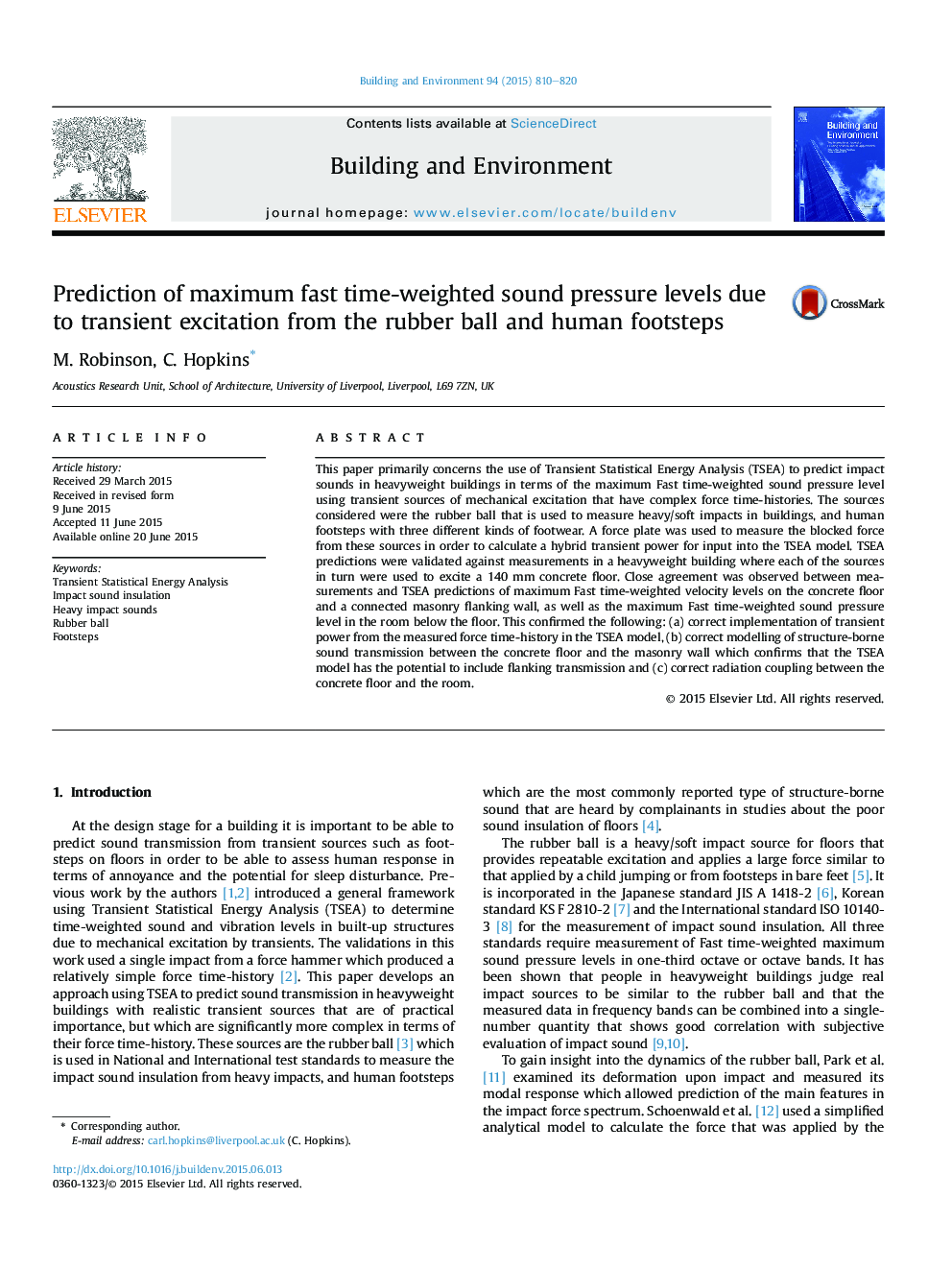| کد مقاله | کد نشریه | سال انتشار | مقاله انگلیسی | نسخه تمام متن |
|---|---|---|---|---|
| 247883 | 502533 | 2015 | 11 صفحه PDF | دانلود رایگان |
• Transient SEA used to predict maximum Fast time-weighted sound pressure levels.
• Standardised transient source was rubber ball used to measure heavy/soft impacts.
• Other transient sources were human footsteps with three different kinds of footwear.
• TSEA predictions were validated against measurements with a 140 mm concrete floor.
• Close agreement was observed between measurements and TSEA predictions.
This paper primarily concerns the use of Transient Statistical Energy Analysis (TSEA) to predict impact sounds in heavyweight buildings in terms of the maximum Fast time-weighted sound pressure level using transient sources of mechanical excitation that have complex force time-histories. The sources considered were the rubber ball that is used to measure heavy/soft impacts in buildings, and human footsteps with three different kinds of footwear. A force plate was used to measure the blocked force from these sources in order to calculate a hybrid transient power for input into the TSEA model. TSEA predictions were validated against measurements in a heavyweight building where each of the sources in turn were used to excite a 140 mm concrete floor. Close agreement was observed between measurements and TSEA predictions of maximum Fast time-weighted velocity levels on the concrete floor and a connected masonry flanking wall, as well as the maximum Fast time-weighted sound pressure level in the room below the floor. This confirmed the following: (a) correct implementation of transient power from the measured force time-history in the TSEA model, (b) correct modelling of structure-borne sound transmission between the concrete floor and the masonry wall which confirms that the TSEA model has the potential to include flanking transmission and (c) correct radiation coupling between the concrete floor and the room.
Journal: Building and Environment - Volume 94, Part 2, December 2015, Pages 810–820
